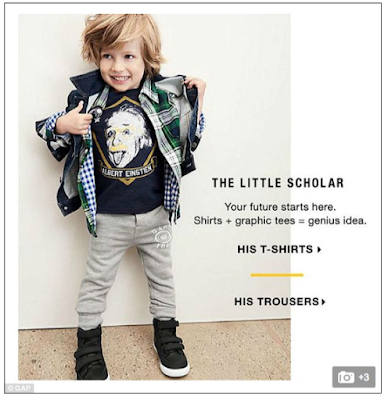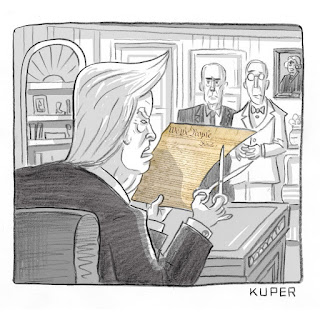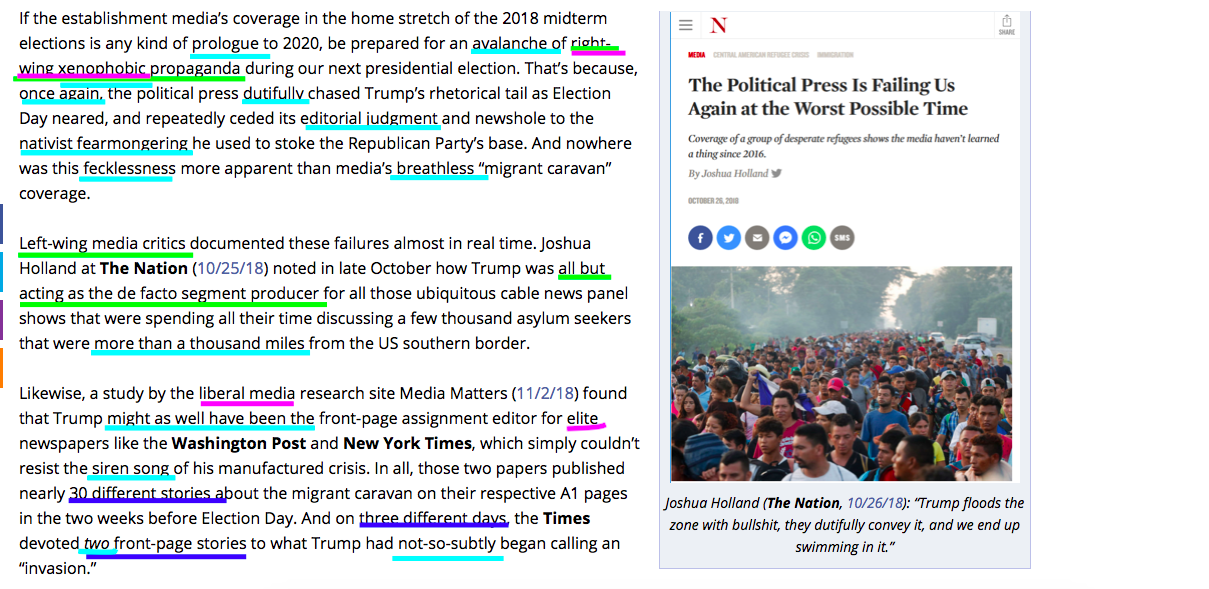Why, Kendall?
Hey everyone! It's Emily again; welcome back! Right now, you're reading this post on the internet. If you have internet, you probably saw that Pepsi ad last year. You know, the Kendall Jenner Ad?
Almost three minutes long, the ad brought controversy that lasted for weeks. And it's not even the worst of its kind. There have been ads by other companies (looking at you again, Dove) that have caused people to condemn the brand entirely. Many people will claim that the audiences of these controversial commercials are "being too sensitive" and "companies can't do anything these days". Today we're going to look at a couple ads that have elicited these types of responses. As we examine them, ask yourself this: is it hard for audiences to watch without getting offended, or is it hard for companies to avoid tone-deaf content?
The first ad we'll look at is the aforementioned Kendall Jenner ad. The most striking component of the structure of this ad, in my opinion, is how god-awfully long it is. In the age of Vines (seven second videos), Pandora commercials (30 seconds maximum), and a thousand other forms of instant gratification, who has the time or desire to watch a three minute commercial for a soda company? Unless, of course, you're analyzing it for a class.
Another structural element is the use of different clips. The video starts with a close up shot of a hand opening a Pepsi can. They really didn't hold back on the product placement here. The video then toggles back and forth between clips of different people going about their daily lives and shots of people marching on the streets in a protest. Of course, it also returns to the uniting shot: someone with a Pepsi can. This shows that, despite other intentions with the message of the video, in the end it all comes back to advertisement and money. As the video progresses, people begin to abandon their activities in favor of joining the protest. The theme then becomes clear: Pepsi unites people. As the protest marches on, Kendall makes eye contact with a handsome man who we've already seen playing the cello. He beckons her to the crowd; she tosses her wig aside and wipes off her lipstick to follow him. This sequence in particular has questionable implications. First: Kendall really doesn't show much interest in the protest before she becomes enticed by a man. Thus, the message really doesn't come across as inspiring. "A protest for people's rights? Who cares? Wait a minute, a hot guy? I'm there!" Kendall's motivations start to blur the intended message of the ad. The other implication of this sequence comes when Kendall abandons her wig and makeup. Can people with makeup and wigs not protest? Can people who care about their appearance not care about causes? Why must Kendall abandon these signifiers of her beauty, when she could march just as well with them?
Then, the clinching moment of the controversy surrounding this commercial. Kendall Jenner, sans wig, and somehow in an entirely different and less glamorous outfit, grabs a Pepsi can and hands it to one of the police officers facing the head of the protest. He accepts it and the music stops. As he sips it, the music comes back in full force, and the crowd is seen cheering. Police officer smiles, Pepsi slogan, and cut. What is the significance of this moment, you may ask? Kendall, who joined the protest due to the allure of a man, essentially solves the problems that sparked the protest just by offering the police officer a drink. She had no connection to the cause and she clearly had no idea that beverages are a small step in changing the habits and beliefs of an entire institution.
Let's take a moment to example our favorite triangle: logos, ethos, and pathos. This ad emphasizes ethos especially. Clearly, Pepsi stops violence and brings people together. Thus, it's only right for you to purchase some. There's a good cause behind it! Pathos also plays a role. The cheering crowd at the end, in addition to the smiling police officer, gives another good reason to buy Pepsi. It makes people happy! If you buy Pepsi, you can cheer and smile as well!
Whatever the message behind this Pepsi ad, it's still an ad, and the ultimate purpose of it is to convince people to buy a product. In my opinion, this ad wouldn't particularly convince me to purchase Pepsi. There are several tone-deaf moments, and it relies on celebrity endorsement to make its point. The intention of this ad was good, but it was poorly executed and needed a lot more consideration if it wished to be considered successful.
Now, blessedly, a much shorter ad. This simple GIF from Dove is only a few seconds long. The Youtube video I've attached shows it repeated several times. The silent clip received much controversy after it was first shown on facebook. The structure is basic, but the implications are what caused people to take issue with this ad. A black woman is shown taking off a shirt which matches her skin color to reveal a white woman underneath. A long history of racism has caused a common belief, perhaps deeply ingrained, that black is dirty and impure. This can be seen years back in America. After all, white people drank from different water fountains than black people, lest they be "contaminated". Thus, this clip could be offensive anywhere. However, in a cleanser commercial, the context makes it worse: you can clean the impurity away! See how this black woman becomes white. This sequence is what makes the ad problematic. However, in my opinion, the end of the brief commercial is what makes it less problematic: the white woman takes off her shirt to reveal another woman of color. Had this addition not been included, the ad could reasonably be seen as racist by all. However, the addition of the white woman "transforming" into another woman of color is the saving grace of this ad. It shows that it's not about race at all, but about diversity, and that everyone can use this product regardless of who you are.
Triangle time! This ad primarily uses ethos. After all, if a product is for everyone, it's perfectly ethical to use it, because you're not excluding anyone. It also uses logos. The Facebook caption included with this ad states alluring statistics, including the phrase "sulfate free" and an endorsement from dermatologists. If a trusted professional uses it, and it lacks dangerous chemicals, then it's a great body wash for anyone.
Personally, a nine-second ad has never been something I use to make my purchasing decisions.
This ad, though it certainly catches attention, would not be the sole factor of influence on my choice. I also think because of the general racist connotations, many would be reluctant to purchase Dove products if they were only considering this ad.
That was a lot to unpack! I've been writing for a long time. I'm getting kind of thirsty for some Pepsi...only joking. Don't forget to let me know your thoughts in the comments. Until next time!
Almost three minutes long, the ad brought controversy that lasted for weeks. And it's not even the worst of its kind. There have been ads by other companies (looking at you again, Dove) that have caused people to condemn the brand entirely. Many people will claim that the audiences of these controversial commercials are "being too sensitive" and "companies can't do anything these days". Today we're going to look at a couple ads that have elicited these types of responses. As we examine them, ask yourself this: is it hard for audiences to watch without getting offended, or is it hard for companies to avoid tone-deaf content?
Another structural element is the use of different clips. The video starts with a close up shot of a hand opening a Pepsi can. They really didn't hold back on the product placement here. The video then toggles back and forth between clips of different people going about their daily lives and shots of people marching on the streets in a protest. Of course, it also returns to the uniting shot: someone with a Pepsi can. This shows that, despite other intentions with the message of the video, in the end it all comes back to advertisement and money. As the video progresses, people begin to abandon their activities in favor of joining the protest. The theme then becomes clear: Pepsi unites people. As the protest marches on, Kendall makes eye contact with a handsome man who we've already seen playing the cello. He beckons her to the crowd; she tosses her wig aside and wipes off her lipstick to follow him. This sequence in particular has questionable implications. First: Kendall really doesn't show much interest in the protest before she becomes enticed by a man. Thus, the message really doesn't come across as inspiring. "A protest for people's rights? Who cares? Wait a minute, a hot guy? I'm there!" Kendall's motivations start to blur the intended message of the ad. The other implication of this sequence comes when Kendall abandons her wig and makeup. Can people with makeup and wigs not protest? Can people who care about their appearance not care about causes? Why must Kendall abandon these signifiers of her beauty, when she could march just as well with them?
Then, the clinching moment of the controversy surrounding this commercial. Kendall Jenner, sans wig, and somehow in an entirely different and less glamorous outfit, grabs a Pepsi can and hands it to one of the police officers facing the head of the protest. He accepts it and the music stops. As he sips it, the music comes back in full force, and the crowd is seen cheering. Police officer smiles, Pepsi slogan, and cut. What is the significance of this moment, you may ask? Kendall, who joined the protest due to the allure of a man, essentially solves the problems that sparked the protest just by offering the police officer a drink. She had no connection to the cause and she clearly had no idea that beverages are a small step in changing the habits and beliefs of an entire institution.
Let's take a moment to example our favorite triangle: logos, ethos, and pathos. This ad emphasizes ethos especially. Clearly, Pepsi stops violence and brings people together. Thus, it's only right for you to purchase some. There's a good cause behind it! Pathos also plays a role. The cheering crowd at the end, in addition to the smiling police officer, gives another good reason to buy Pepsi. It makes people happy! If you buy Pepsi, you can cheer and smile as well!
Whatever the message behind this Pepsi ad, it's still an ad, and the ultimate purpose of it is to convince people to buy a product. In my opinion, this ad wouldn't particularly convince me to purchase Pepsi. There are several tone-deaf moments, and it relies on celebrity endorsement to make its point. The intention of this ad was good, but it was poorly executed and needed a lot more consideration if it wished to be considered successful.
Triangle time! This ad primarily uses ethos. After all, if a product is for everyone, it's perfectly ethical to use it, because you're not excluding anyone. It also uses logos. The Facebook caption included with this ad states alluring statistics, including the phrase "sulfate free" and an endorsement from dermatologists. If a trusted professional uses it, and it lacks dangerous chemicals, then it's a great body wash for anyone.
Personally, a nine-second ad has never been something I use to make my purchasing decisions.
This ad, though it certainly catches attention, would not be the sole factor of influence on my choice. I also think because of the general racist connotations, many would be reluctant to purchase Dove products if they were only considering this ad.
That was a lot to unpack! I've been writing for a long time. I'm getting kind of thirsty for some Pepsi...only joking. Don't forget to let me know your thoughts in the comments. Until next time!



Comments
Post a Comment